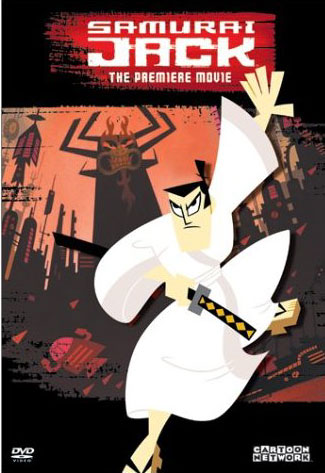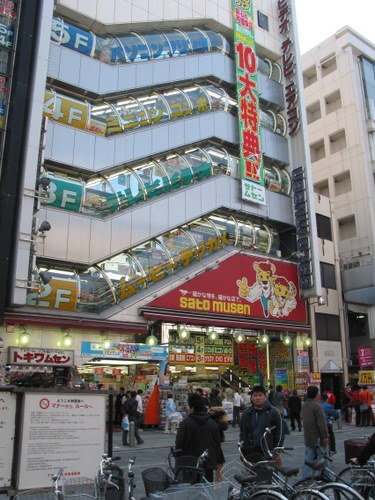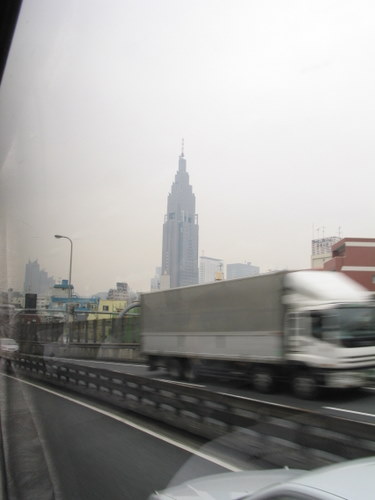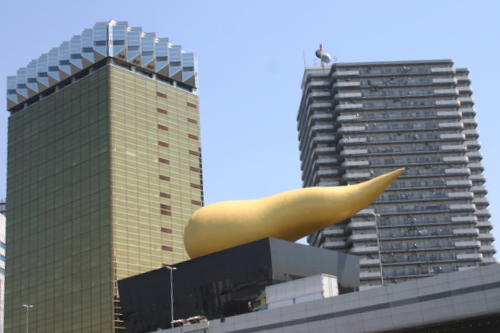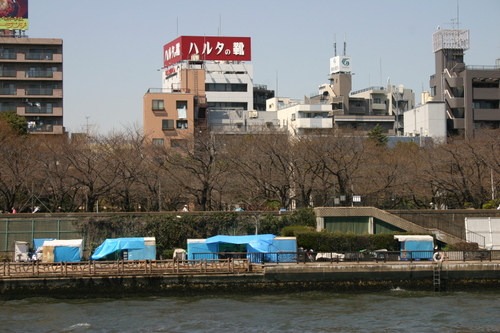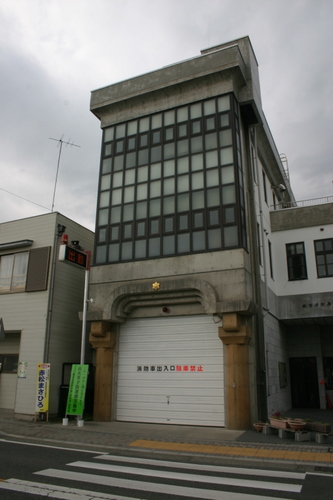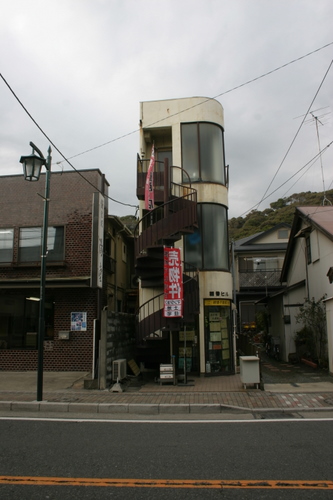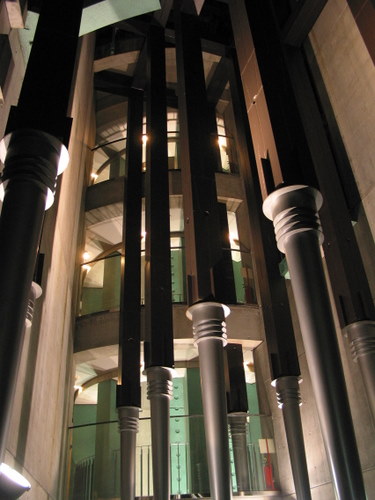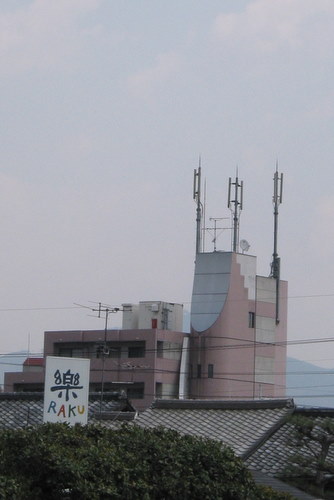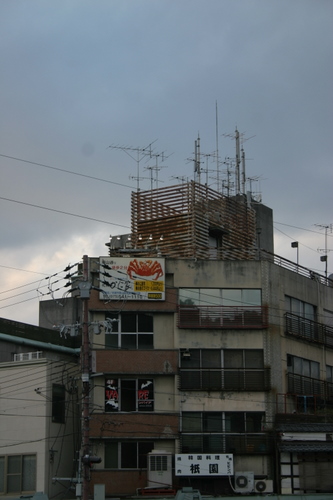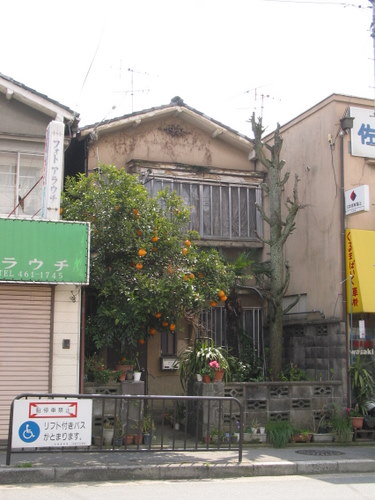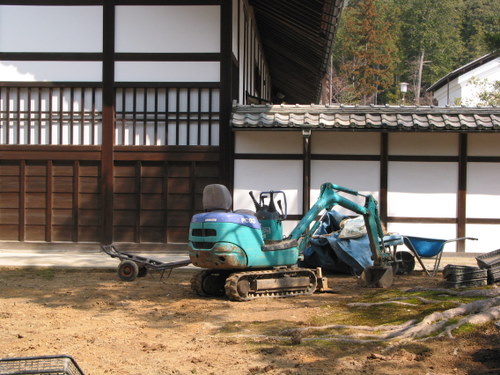Pilot: Welcome to Japan, folks. The local time is…tomorrow.
The Simpsons, Thirty Minutes Over TokyoIf you want to know what Japan is like architecturally, go watch Samurai Jack cartoons. The future world created by Genndy Tartakovsky looks a lot like present day Japan.
I picked some photos of buildings to give you a general idea of what I have seen. Here’s a Habitrails-inspired otaku-infested electronics shop in Akihabara.
Here’s a very elegant Stalinist-style skyscraper somewhere in Tokyo.
Philippe Starck blemished Tokyo skyline with a giant golden turd on the top of Asahi Beer Hall. It’s supposed to symbolize a flame that in turn is supposed to symbolize the company spirit of Asahi. Giggling tourists take a lot of pictures with creative shot framing. By the way, I’ve tried a lot of different beers that Asahi makes, and they all taste like, uh, flame. I, personally like Sapporo much better.
The Japanese society is highly stratified. For instance, in the hotel complex where I was staying there were at least 5 different classes of buildings (each of a different prestige level) and the ANA plane in which I travelled also had 4 or 5 types of seating. On this picture you can see two layers of Japanese society: well-designed plastic huts built by homeless with a backdrop of what I’m told is company-provided employee dorms.
Here’s an amazingly eclectic little building (I think it’s a firehouse). It combines elements of Art Deco, Modernism and traditional Japanese architecture.
And this building is pretty typical of modern designs. I love the huge wrap-around windows, the dna-like staircase and the efficient use of space.
I was most shocked by architecture in Kyoto’s Gion, the geisha district. Near all-traditional Japanese buildings there was a number of super-futuristic mostly metal buildings that looked like spaceships. I think they were nightclubs of some sort. I’ve never seen anything like this anywhere else.
Many building tops had antenna clusters, one more cyber-punkey than the other.
As we all know, land is pretty tight in Japan. Here’s a pretty typical small house somewhere in Kamakura (I think).
What makes construction in such tight quarters possible is this marvel of technology: a cute pocket-sized excavator.
People of Japan in 25 Pictures
A policeman in his booth.
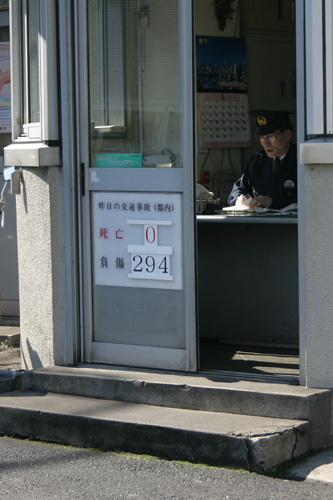
Rikshaw and his passengers in Arashiyama.
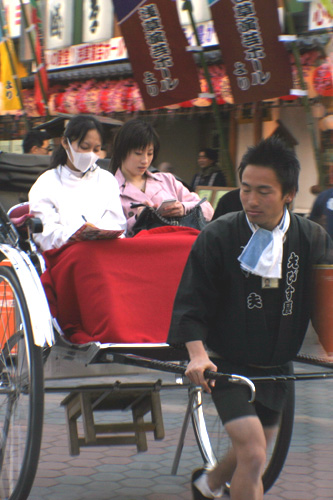
Outdoor eatery – Japanese really use a lot of space heaters.
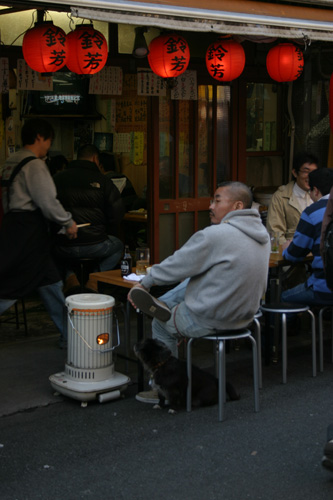
Ryokan owner in Kyoto.
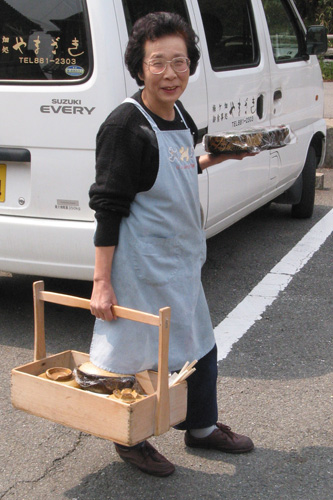
Snack vendors. The surgical masks are worn mostly by allergy sufferers – which due to a high number of pollen-producing Sugi trees planted are about 1 in 5.
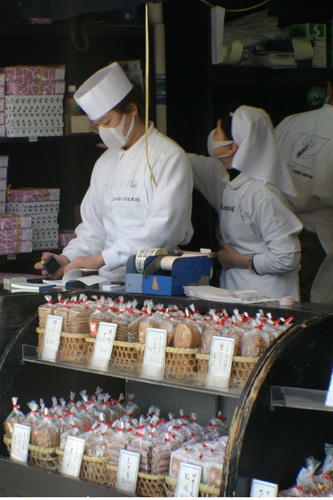
Some take pictures of the cherry blossoms, others take a more traditional approach.
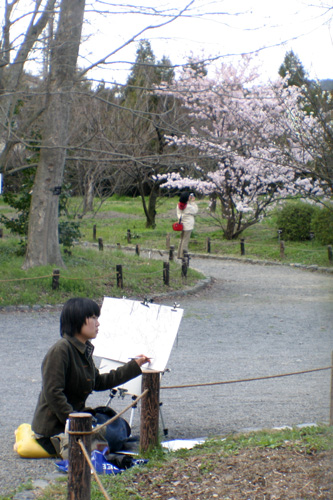
Riding on the Shinkansen.
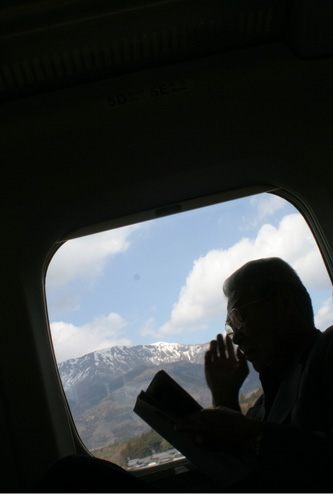
Kids visiting Zeniarai Benten temple.
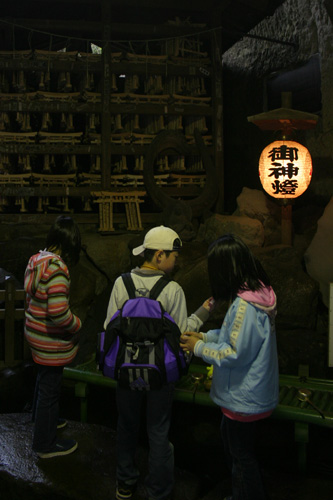
In a museum.
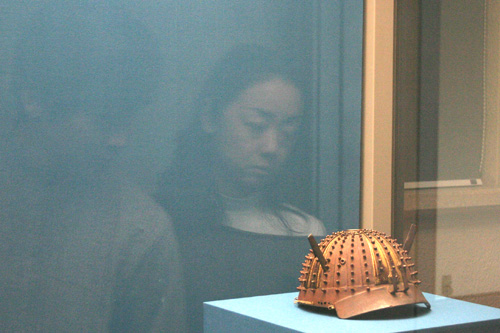
Akihabara girl handing out promotional packs of napkins – kind of like a booth bunny without a booth.
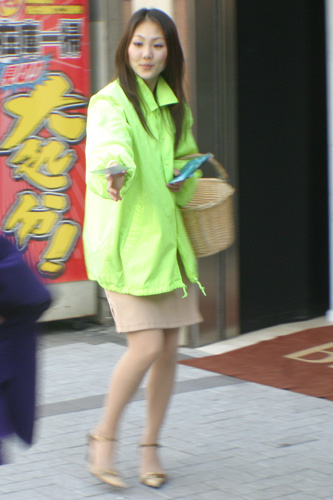
On a JR train.
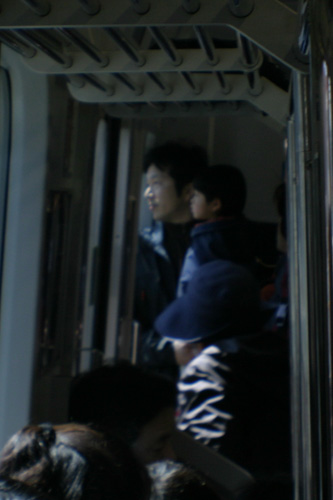
.
Consulting a fortuneteller.
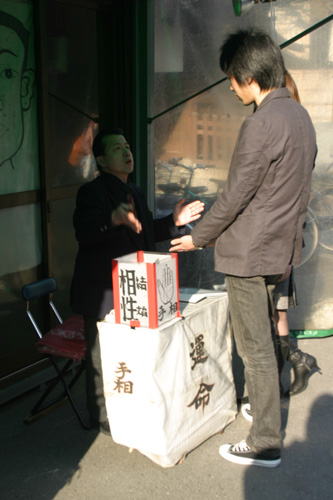
I was rather surprised at home many people wear kimonos. I noticed that a lot of shopkeepers wear traditional clothing, it must help with projecting the traditional image
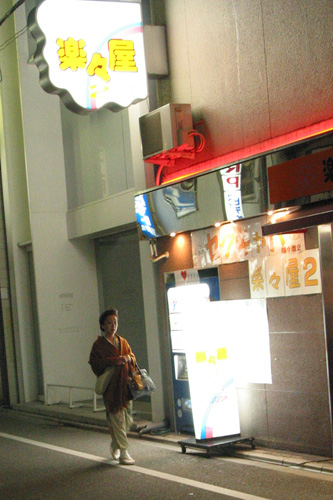
Another snack vendor.
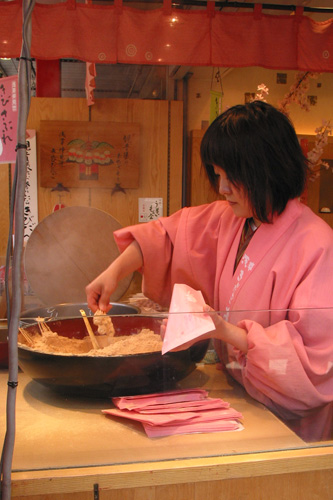
Shinkansen driver. Don’t the white gloves make you feel safer somehow?
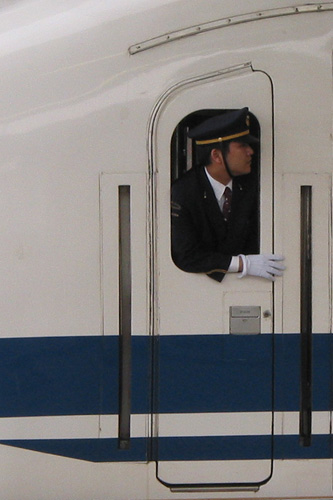
Squid on a stick vendor
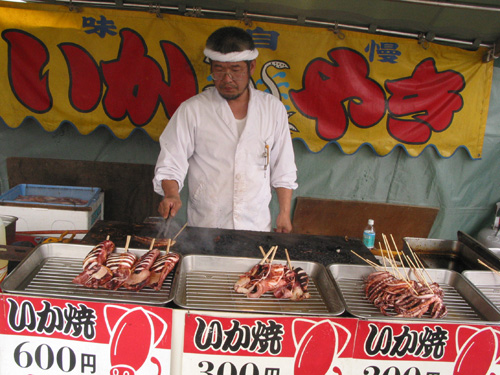
Celebrating Hina Matsuri – Girl’s Day.
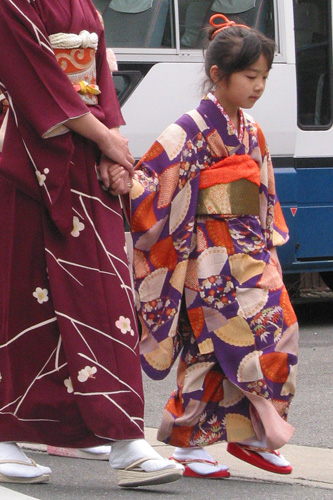
Cloth painter. My wife bough a shopping bag with sakura blossom design.
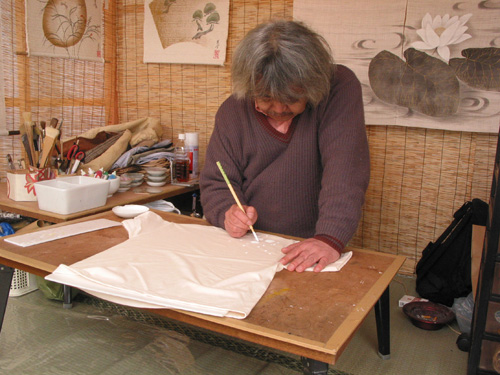
Fishermen.
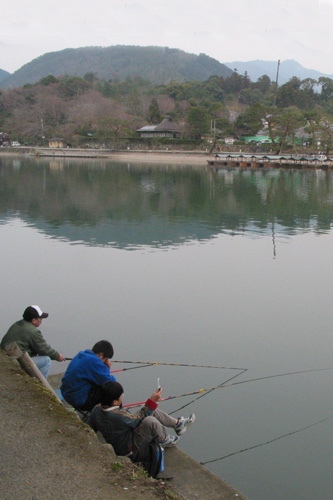
Lumber vendor in his shop.
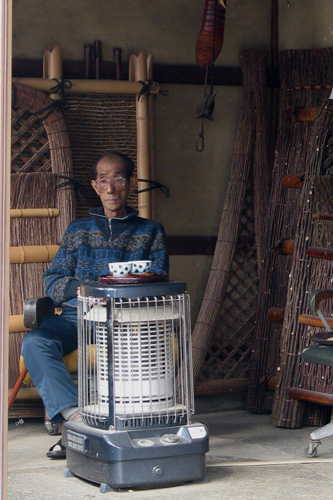
Restaurant worker.
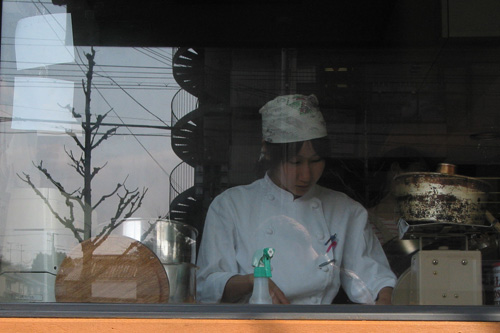
On bikes.
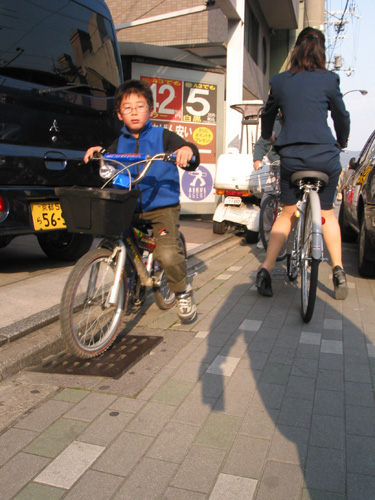
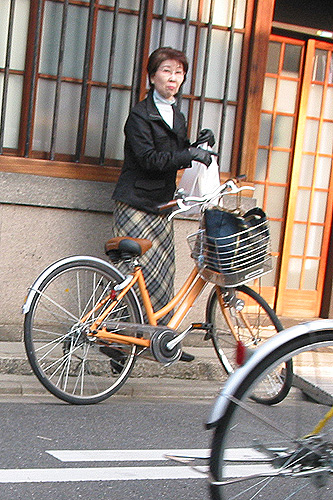
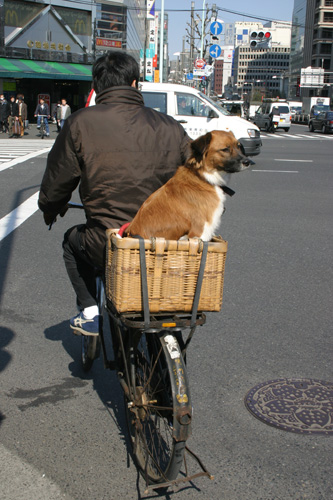
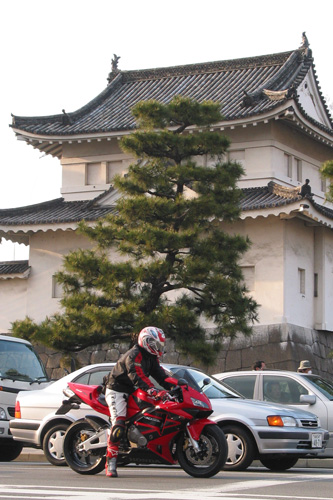
Matcha doing?
I’ve been to Joe’s today and had one of their iced lattes. And then another one. It’s so nice to finally have a high quality alternative to Starbucks in Manhattan. I really, really hope they take off. I mean think about it — every espresso drink they make is light-years ahead of the same Starbucks drink. You can taste burnt beans and probably ass in Starbucks iced lattes, the Joe’s version is smooth and almost chocolaty, and tastes like the coffee smell (that’s the best way I can describe it).
I told Jonathan, the owner of Joe’s about Matcha teaa long while back, but he totally blew me off. I even offered to come over and make some for him. Anyway, *$’s is pushing Matcha based drinks and having some success with them. Why wouldn’t they – Matcha to tea is what espresso is to coffee. Maybe now he’ll consider it, and do it right for a change. Matcha should be enjoyed whipped in a bowl with water, although mixing it with milk, and even spreading it on a toast with butter is acceptable to me at least.
I guess I should stock up on Matcha though – Starbucks purchasing might raise the prices a lot. Somehow I doubt that they buy the good stuff from Kyoto. Maybe they figured out a way to get it someplace cheaper — at a couple of bucks a gram I don’t think high quality “thick” Matcha is attractive to them.
The League Of Objects Made In Different Places
And here’s what I spent much of my Sunday sitting in the armchair and reading The Amazing Adventures of Kavalier & Clay (thanks for recommendation, badger). For a minute I thought about where all the stuff that surrounded me was made.
Matcha tea is from Kyoto Japan, so is the bowl. The cigar’s components hail from Nikaragua, Ecuadore and Sumatra. The water is from Fiji. The ashtray is probably made in China (my radium glass ashtray broke) and so is the window fan that sucks out all the smoke. The armchair is made in Italy. Tilde the cat is probably made in Brooklyn (even though she looks sullen, she was not posed at all).
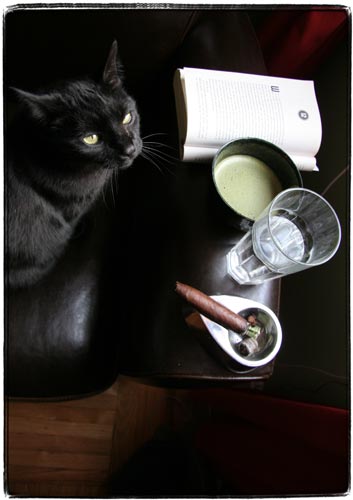
I wonder if Michael Chabon got the name for one of the title characters from this old hotel a couple of block from the Empire State Building.
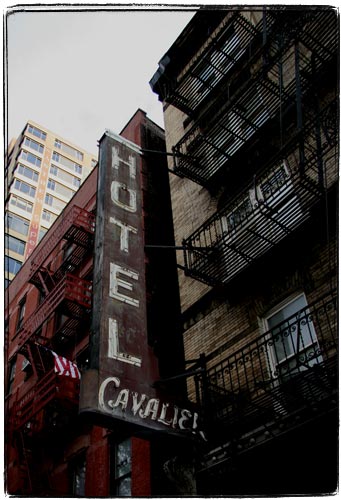
Caffeinated Bubble Trouble
It’s a proven fact : bubbles make caffeinated beverages better. Take a crappy tonic drink from Thailand, add carbonation, introduce it in Europe and the US and bam – you are a billionaire. Introduce espresso (simplistically speaking a very concentrated coffee with a foam of sugars, proteins and oils on top) and cappuccinos (add foamed milk to an espresso) in America on industrial basis – and bam – you almost a billionaire.
Seems like the next logical step is tea. You see, Japanese have this tea ceremony thing. Never being a big fan of tea, but being a Japanophile at heart, I always wanted to try that. Unfortunately to this day I haven’t, but I definitely tried some tea that is used in the ceremony. They were selling it in a booth in Kyoto alongside with ice cream.
Japanese tea ceremony involves two kinds of tea, “thick” and “thin”. From what I understand the difference mainly in the dilution and the quality of tea. I like stronger flavors, like espresso and scotch, so I prefer to make thick tea. Making is very simple. You take some high quality powdered tea called Matcha and put it into a bowl. You pour some hot water on top (I use the water from my espresso machine’s hot water spigot). Then you take a special whisk called chasen that is made by splitting a single piece of bamboo and whip your beverage up, kind of like making shaving lather with those old fashined shaving whisks.
You get a radioactive green liquid that is absolutely loaded with green tea flavor, caffeine and and antioxidants. I already went through a package of medium cheaper Matcha, I think I’ll order some of the higher quality stuff as well.
Here’s how Matcha is served in Japan, with regular tea and sweets. The one on the right is wrapped in a pickled leaf of sakura.
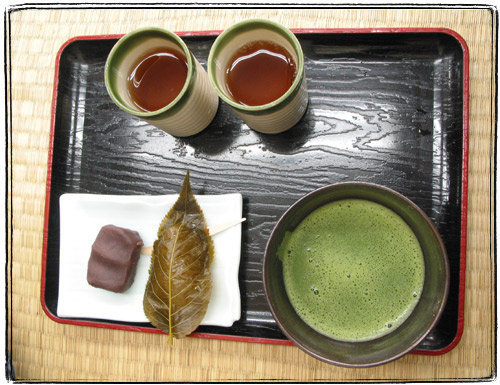
Here’s what I just made for myself:

Deadprogrammer Visits Japan or Sakura in Partial Bloom Part I
Part I : The Roots Of Russian Japanophilia
What are the roots of Russian (I should really be saying “Russian-speaking Generation X”, but that would be too long, wouldn’t it?) Japanophilia? Honestly I have no idea, but the fact is that it plays an important role in the huge number of high quality Sushi restaurants in Brooklyn, tremendous popularity of Japanese themed blogs in the Russian-speaking Livejournal community and the popularity of Erast Fandorin Mysteries.
Kitya, the author of the above mentioned outstanding blog, whom I met in Tokyo, thinks that the reason is probably the same as with the US Japanophilia – anime cartoons. I have a different theory. Before the first anime shown in the USSR,Flying Ghost Ship, made it’s appearance, I was already fascinated with Japan. The reason for that was the excellent book called “Branch of Sakura” that I found in my dad’s library. As it turns out, 30 years later the author of the book, journalist Vsevolod Ovchinnikov was invited back to Japan to write a second installment of the book. Ovchinnikov’s writing still has the same lucidity, simplicity and attention to detail. I think that he is one of the major reasons why Soviet Generation X is so interested in everything Japanese.
Some time during Perestroika there was a week of Japanese TV in USSR. They showed the most amazing stuff : how they make Japanese water sharpening stones (I own a set these days) and how a skillful sharpening master can sharpen a carpenter’s plane so that he could make a micron thick shaving with it. They’ve shown how chasen whisks (I have one) used in a tea ceremony are made by splitting bamboo by hand. They’ve shown a fisherman who could tell exactly how many trouts his net was catching and a master bamboo fishing rod maker. They’ve shown an awesome game show called Takeshi’s Castle. Oh, how I wish someone would make a DVD of that show! There was the usual exotic stuff like Sumo wrestling, Sakura festivals as well more unusual stuff such as a few clips of Japanese reporters walking around Moscow (a part of which I described earlier.
Before coming to America I thought that there must be hundreds of channels on TV there, and specifically a few that showed only cartoons (as opposed to 3 or 4 channels in the USSR with one to two old cartoons shown per day). My expectations were overly optimistic as the Cartoon channel came into existence significantly later. Now I hope and pray that there will be a channel of Japanese TV with English subtitles, Sumo, news, Abarenbo Shogun and other Chambara. And Takeshi’s Castle reruns. Ah, one can only dream. For now all I have is the couple of hours of Japanese shows on Fujisankei Lifestyle which airs for a couple of hours. Actually while writing this post I learned that there is a Japanese channel on the Dish network, but it’s $25 a month.
I never anywhere abroad since I came to the US and me and my wife did not have a decent vacation in years. So I decided to pleasantly surprise my wife, who knows and tolerates my extreme hate of traveling, and proposed that we have a vacation in Japan. Thanks to her diligent planning we had an amazing 10 day trip to Japan, spending 6 days in Kyoto and 4 days in Tokyo.
My camera died in Gion, Kyoto’s geisha district. But still me and my wife managed to take about 2500 pictures. I took a lot of 3d pictures. 3d picture technology is very simple : I have a lens that takes two slightly offset pictures at the same time. To view the image you can either learn a special technique and really, really strain your eyes or obtain a rather simple viewer of which there are many varieties, some very cheap, some a bit more expensive and some are pretty expensive. I find that the cheap viewer made by the same company that makes the lens that I use work very well.
[update] : due to the lack of interest there won’t be many 3d pictures in my posts.
[update] Ok, I did get one request for a 3d viewer. So maybe someone out there cares. So if you want one, send me your postal address to 
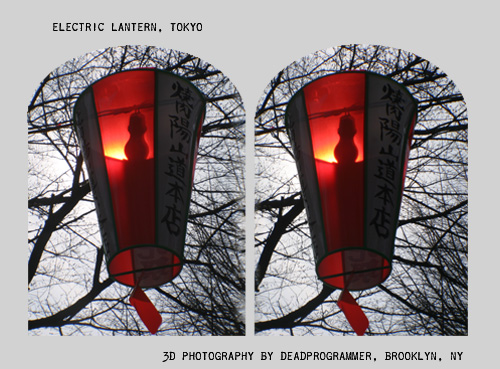
Where in the World is Deadprogrammer?
I am in Kyoto, Japan, with my wife, on a vacation of a lifetime. We are spending two more nights in a wonderful ryokan here, and then one more night in Tokyo. There are 4.43 gigabytes of pictures in my Tablet PC, I really hope Windows XP / Acer hardware is not going to eat them before I get them into a more secure location. My Canon EOS 300D broke (the poor thing does not power up at all even though the battery is ok), so I am down to my trusty Canon Powershot G2.
Meanwhile, enjoy this picture of a rainbow as seen from an airplane. Yes, it is circular.
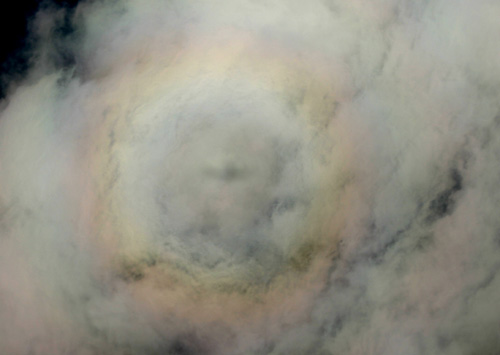
P.S. Right, I forgot that it’s April Fool’s today. But I am actually in Japan, this is not a joke. I wish I’d have though of something witty, but it’s a bit too late now.
